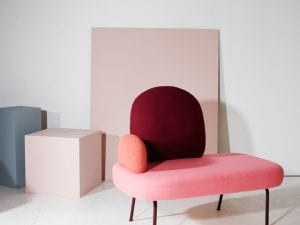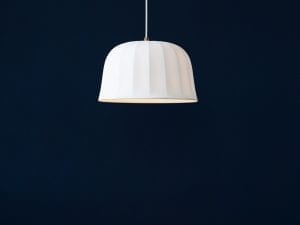Looking at the idea of social community as a model for idea generation, a team of Norwegian designers address global concerns through production.
Scandinavian design has, traditionally, been associated with minimalism and functionality, concepts that have only been furthered by the rise of IKEA’s flat-pack empire. Beyond this multi-national Swedish-Dutch company, however, is a cohort of budding young practitioners who are contributing to the wider network of production on a scale that’s barely recognised. And indeed, each country within the Nordic region should be celebrated individually for its own merits.
Linda Fisti is one such advocate of this as Project Manager for Swedish Design Goes Milan 2017, an initiative that raised global awareness of the country’s contributions to the industry through creating meeting places, sharing stories and, ultimately, learning from people and practitioners from around the world. She notes: “Swedish design is appreciated internationally. In fact, 70 per cent of the production today is exported to other European countries, the USA, Australia and Asia. There is a steady increase of interest for quality and innovation, which is the reason for us to be present in Milan, year after year.” (February 2017, Business Sweden)
What Fisti highlights – beyond the rising interest in Scandinavian creativity – is that design has the capability to bring people together, based on mutual demands and shared ideals. Whilst Sweden’s 2017 presentation at Salone del Mobile Milano, entitled Mingle, focused on sustainability, there was a resounding interest in shared goals. As Annika Grottell, Architect at White Studio (the firm that curated the show), continues in the same article: “We wanted to highlight the Swedish awareness of environmental issues, choice of materials, focus on origin and quality. All participating exhibitors contribute to this in different ways. We chose the name because of its meaning of mixture, mix, blend, but also the social aspect – to meet and exchange. Our goal has been to offer a warm and inviting atmosphere, a meeting place for new ideas and collaborations. The stand illustrates the mix, in order to overlap, compensate, change, blend and unite to create and form oneness and togetherness.”
These ideas are significantly influential across the entire region and have now been picked up by Sweden’s sister nation. Norway’s 2018 presentation at Salone del Mobile, entitled Norwegian Presence, is heavily focused on themes of community, collaboration and mutual support. As Grete Sivertsen, Project Manager for the exhibition, notes: “This year’s presentation is about how we live. Collaboration defines the energy of 21st century design … and the world in general. The feeling of togetherness is becoming a strong motivation for all people – creating a positive meeting place.”
Like its predecessor exhibitions, Structure (2016) and Everything is Connected (2017), this year’s edition is the collaborative vision of Design and Architecture Norway (DOGA), Norwegian designers’ union Klubben, and internationally focused craft network Norwegian Crafts. With the rise of right-wing politics, walls being built (with Trump’s Mexican border jokingly proposed as a commission for IKEA) and populations at war with one another, there has never been a more fitting time for practitioners to demonstrate the importance of working in tandem. This all-encompassing and open-minded approach is taken forward into Norway’s showcase this year, which combines 10 studios, six manufacturers and four craft artists. Adding further to a wider sense of reach is the change of location. Zona Tortona, which is rapidly emerging as Milan’s creative hotspot, presents the team with the opportunity to build upon existing networks and exchange ideas as part of a new generation of visionaries with shared intentions.
This socially driven approach is embedded into Norway’s distinctive, mutually supportive and cross-disciplinary culture, and is embodied by the concept of “Fellesskap” (the Norwegian term for “community” and collaborative approaches). “Everyone has different ideas and contributes to each other’s practice,” explains Sivertsen. “It’s nice to see how people can learn from each other in a unified environment. Before we started, we came, sat, and drank wine together. This builds a social meeting place, motivating everyone so they feel like they are not alone and that they can do something with other people … It’s more about togetherness – both in the way that the designers work alongside one another and in the way that the products are assembled.”
Using the expo in a developmental and collective way, Norwegian Presence discusses how design, like any other art form, is really about an exchange of ideas, a meeting place between different identities and embracing shared commonalities. “It goes beyond the function of showcasing work – we want audiences to stay, talk to the brands and be part of a wider discussion.” This is especially important at Salone del Mobile, which self-consciously, and perhaps self-importantly, presents itself as more than a mere trade fair. Instead, it claims to be a system of connections, creativity, and innovation, attracting journalists, collectors, intellectuals, critics, architects, and creatives of all kinds; operating as an emotional experience of positivity; a global experience, which is organised around a principle of cultural inclusion.
However, these ideas aren’t new. The precedents stretch back to John Ruskin (1819-1900) and William Morris (1834-1896) who radicalised models of self-confirmation in work, which maintained that the demands of industrial production were preventing human beings from determining their own actions or potential. Furthermore, the German Expressivist tradition asserts that our “essential human powers” are truly harnessed in our capacity for the creative expression of our feelings and needs, whilst the Marxist idea of labour took work as the ideal mode of aesthetic production and the model of all social organisation. However, Salone del Mobile projects these ideas onto the modern world of global professionalism, bringing trade back to its human roots.
Moreover, beyond bringing people together, there is, of course, a reliance upon the fair to be part of a wider financial and commercial portfolio. “Though it is difficult to see a direct result during the festival,” explains Sivertsen, “all the most important people in the industry are in Milan, and it’s all about having the right contacts because the market is so small in Norway that you have to go to ‘meet the world.’”
What types of products are being presented this year? Sivertsen expands: “The works are incredibly natural and real; however, this is met by the influence of technology and modern life. It’s an interesting mix that looks backwards in order to look forwards.” She continues: “It’s informal in a way. When it comes to trends, they’re sometimes difficult to predict, but in general, the products are beautiful or useful, and have little by way of unnecessary detail or embellishment.” Traditional notions of craftsmanship as providing everyday solutions do emerge here. Whilst aesthetics are important – and the brands included do indeed use pop colours and bold geometric shapes – audience popularity plays a vital role. What does the single buyer need? What does the larger market require? Are designers really and in all honesty meeting the demands of a rapidly expanding world?
Of course, sustainability still remains a vital component of design, and themes from previous years create consistency in Scandinavia’s identity as a collective of nations concerned with the same issues. Ecological consciousness, therefore, has not been forgotten in Norway’s presentation this year. Sivertsen comments: “We have so many resources – water, wind and forests – we’re almost spoilt for choice, so perhaps it’s not so much in the manifesto of creatives as it’s built into our mentality; however, we want to bring this green thinking to the world and help the wider global issue.”
Ecological awareness is emphasised in the Salone del Mobile manifesto, which accordingly states that contemporary quality design must be sustainable in the sense that manufacturers, rather than simply focusing on the “green” outcome of each product, should pay close attention to every part of the production process – from the creation of the prototypes to industrial development, from financial planning to marketing and communication, and post-sales service. Norway’s approach is perhaps a little less outward-looking than that. Whilst pursuing different modes of energy, the team – and indeed the country – are fully engaged with the importance of being responsible for, and deeply involved in, all the related processes from start to finish. “We want to show the world that it’s possible – a product’s identity can be tracked from the inception of ideas and protoypes right through to the end of its production,” says Sivertsen.
By showing designers, craft artists and producers in juxtaposition (six of Norway’s most respected manufacturers are included here, such as Vestre and the freshly launched creative enterprise Objekt), Norwegian Presence offers a complete concept-to-creation picture. Such an expansive and forward-thinking approach would not be possible, of course, without spotlighting a number of exciting, energetic and emerging creative voices, and providing a platform for the manufacturers who provide the lifeblood of the wider industry.
One such example of this is Lars Tornøe, who foregrounds the multi-functionality of products through a series of wooden bowls realised in ash and oak, which can be used conventionally or as storage facilities. Bringing in ideas about humanity’s earlier relationships with materials, and with making as a whole, is Oslo-based Sigve Knutson, who utilises elements of sculpture within modern-day shelving. Sara Polmar and Noidoi also come to the fore as notable highlights of this presentation; the latter company was founded only a few years ago, in 2013, but is inspired by the differing cultural and professional backgrounds of its two co-founders, with results that place an emphasis on usability, materiality and craftsmanship working in parallel.
Ultimately, what Noidoi’s – and indeed the entire fair’s – ethos is built upon is the idea that an innovative and considered approach to design can provide the mechanism to satisfy a vast range of social, environmental and domestic needs. As Sivertsen concludes: “Finding new solutions, or imaginative ways to use materials, is the most important thing today – thinking about what it is that we actually require. We have enough in the world as it is. Really, it’s about looking at manufacturing as a way to take the world forward, together.”
Words
Max L. Feldman
Kate Simpson
17-22 April
www.norwegiancrafts.no









